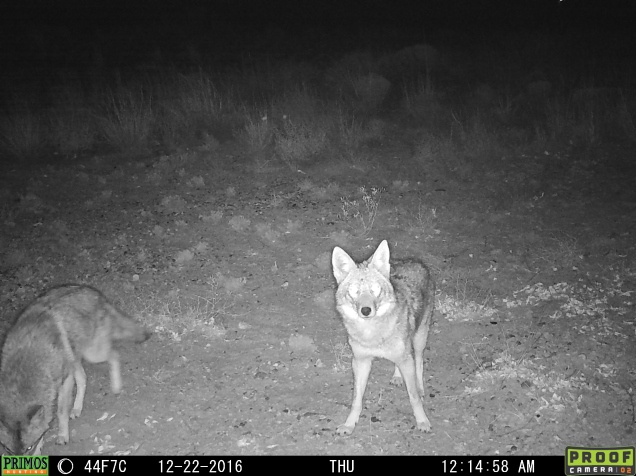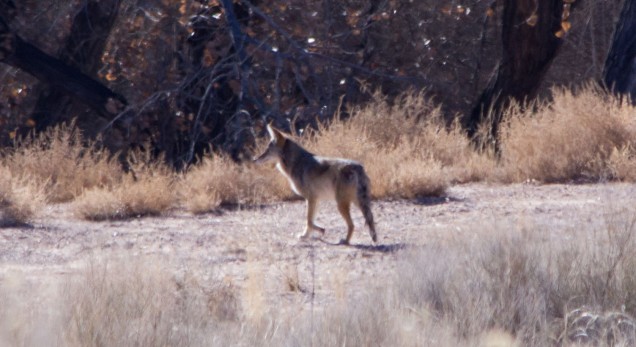Nature pits the Coyote against humans and the Coyote are winning. However, a story coming out of San Francisco California suggests a different perspective on that relationship. This is an interesting comment about the Coyote’s ability to thrive in an urban environment based on the local newspaper’s other entertainment value. Coyotes have learned over the years that survival depends on its ability to blend into its surroundings. In the above story the newspaper carrier simply wants to end having to re-deliver papers. His solution only serves to reinforce to a Coyote, humans are not to be feared! As this blog has pointed out lo these many month, Coyotes do very well in municipal settings Thank You very much! But why do Coyotes do as well as they do when everyone hates them? The secret is that not every one hates the Coyote (nuisance animals in general). The National Park Service reports on a regular basis that even with signs reading, DO NOT FEED THE WILDLIFE – their Rangers still find piles of pet food left along trails. People have been cited for illegally feeding wild animals yet the practice continues. Now, we have a paper carrier encouraging a Coyote to retrieve and play with substitute newspapers. These misguided but well meaning folks do not understand that feeding / playing with the wildlife diminishes the fear of humans. Not only will the wildlife lose their fear of humans they will forgo their natural hunting instincts to dine at the local neighborhood garbage can or backyard pet food bowl.
There are a lot of stories these days about Coyotes stalking family pets and carrying those pets off while the owner’s watch in horror.
Yes, some pets do survive the initial attack only to suffer until death takes their pain away. Pets that do live through their injuries are fortunate though often traumatized to the point of not being able to do their business without looking over their shoulders! Here is the point that falls through many of the “attack stories,” wild life offers other ways to kill then just aggressive attacks.
K9 Parvo, Distemper and Rabies are all carried by wild life not just Coyotes.
(https://www.akc.org/expert-advice/health/common-conditions/parvo-in-dogs/),
However, this blog’s focus is on Coyotes living among us so it is important to understand that these days one is just as likely to encounter a Coyote as any other wild life. Remember it isn’t just the physical presence of a Coyote transferring diseases during an assault it is also shedding and their fecal matter we must be concerned with. All animals primarily experience their world through sounds, smell and taste. As we walk through the neighborhood we pick up all sorts of unseen debris on our shoes and clothes. Just our walk through the neighborhood can infect our pets. The pets use their sense of smell and taste to see their world during those walks. Who hasn’t walked into their homes only to have the family pet come wagging their tails and beg for a pet on their head? We bring all kinds of infectious diseases into our homes without ever realizing it. Keeping the pet food bowls picked up and the garbage can lids secure are only the first lines of defense against Coyotes. It is important to know what has passed this way and what we step in!
So what do we do to avoid Coyotes in our neighborhoods? If you haven’t encountered a Coyote you soon will. Between now and that first time take the following preparations;
- Make sure your pets are on a leash. Some folks believe their dogs are just too big to be taken by a Coyote. Maybe – but do you really want to take the chance?
- “Carry a big stick” and not just because President Theodore Roosevelt said so. A walking stick or golf club will work
- Carry a sound device such as a gym whistle or even a soda can with rocks.
- Clean up around your home – put away empty pet food bowls. Water bowls catch debris or left over food particles from your pets food bowl!
- Use secure lids for garbage cans or trash receptacles. Eliminate food smells!
- Around the house be sure wood piles do not provide dens for Coyotes. Storing a wheel barrow upside down? Be sure nothing can get under it.
- Watch fall out from bird feeders – seed on the ground will draw mice / rats which in turn will draw cats.
- In the neighborhood check out any medians with shrubs or sunken areas – all make great dens for Coyotes.
- Make sure you have your local legal authorities on speed dial, see a problem call it in!
- Make sure your local municipal / city / county aggressively pursues animal control policies and procedures! If they don’t get involved!
Stay tuned, there is more to come on the Coyote Cam


 Most of us have hand fed our pets. Right? Did you know there is a right way to feed treats? Never offer anything to a pet using your extended fingers! Place the treat into the palm of your hand and place your open palm under the pet’s muzzle. Why? The pet will use its tongue to pull the treat out of your open palm. Otherwise, using your fingers to feed treats will encourage your pet to use its teeth to pull the treat to its mouth. Now, a lot of folks tend to be skittish and will pull back when confronted with pet teeth – this causes the pet to aggressively pursue the treat. Bitten fingers usually result from this method of treat feeding! Meanwhile, your pet wonders why you are growling at it while holding your bleeding fingers in your now clenched fist! Not a good thing!
Most of us have hand fed our pets. Right? Did you know there is a right way to feed treats? Never offer anything to a pet using your extended fingers! Place the treat into the palm of your hand and place your open palm under the pet’s muzzle. Why? The pet will use its tongue to pull the treat out of your open palm. Otherwise, using your fingers to feed treats will encourage your pet to use its teeth to pull the treat to its mouth. Now, a lot of folks tend to be skittish and will pull back when confronted with pet teeth – this causes the pet to aggressively pursue the treat. Bitten fingers usually result from this method of treat feeding! Meanwhile, your pet wonders why you are growling at it while holding your bleeding fingers in your now clenched fist! Not a good thing!


 First, a disclaimer is required here. This writer has always been an outdoor sportsman which includes hunting and fishing. In conjunction with being an outdoor sportsman we all need to recognize that predators come in all sorts of packages; fin, fowl and animal (both the two legged and four legged varieties). It is my belief that good stewardship includes land as well as wildlife! A well maintained wildlife environment provides a shelter against encroaching humans and conversely, predators from wondering neighborhoods.
First, a disclaimer is required here. This writer has always been an outdoor sportsman which includes hunting and fishing. In conjunction with being an outdoor sportsman we all need to recognize that predators come in all sorts of packages; fin, fowl and animal (both the two legged and four legged varieties). It is my belief that good stewardship includes land as well as wildlife! A well maintained wildlife environment provides a shelter against encroaching humans and conversely, predators from wondering neighborhoods.




